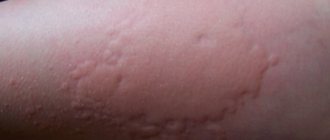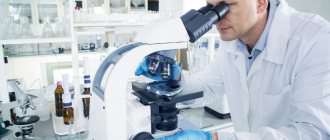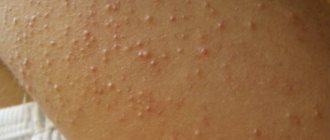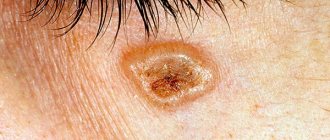Abscesses formed by a staphylococcal infection in the thickness of the dermis around the hair follicles are called boils or boils, and the disease itself is called furunculosis. A boil on the face is the most dangerous type, since the cavity with pus is located in close proximity to the brain.
The appearance of such subcutaneous suppurations is accompanied by severe local pain; in severe cases, the temperature rises and signs of general intoxication of the body appear. Doctors recommend that at the first sign of a boil you seek medical help, do not use medications uncontrollably and do not try to squeeze out the abscess or open it in any other mechanical way.
Causes of abscess
Most often, the causes of an abscess are bacteria and viruses that enter the body through the affected skin or mucous membrane. For no reason, an abscess can form in internal organs, since various microorganisms exist in a passive form in the human body. When the immune system is weakened due to negative circumstances, bacteria and viruses are activated, multiplying and causing subsequent harm to health.
In a sense, the abscess plays the role of protecting the body from infection. It accumulates infection in a certain area of the skin, protecting the unaffected tissues from inflammation, resulting in the formation of an abscess.
Photo of facial skin abscess
Factors promoting development:
- skin injury when working with soil or chemicals;
- overheating of the skin;
- hypothermia;
- prolonged exposure to water;
- failure to comply with personal hygiene rules;
- primary and secondary immunodeficiencies;
- unbalanced diet;
- disruption of the endocrine glands.
Prevention
What to do to reduce the risk of boils:
- Strengthen the immune system: lead a healthy lifestyle, harden the body, do morning exercises. It is advisable to give up bad habits (this is not only smoking and alcoholic libations, but also lack of sleep, the habit of sitting for hours at the computer, etc.). If a person does not recover from a cold, it makes sense to consult an immunologist.
- Remove fatty and spicy foods from your diet, enrich the menu with fresh vegetables and fruits. Reduce alcohol, strong tea and coffee to a minimum, instead of baked goods, chocolate and confectionery - porridge, bran bread, fermented milk products. If necessary, the doctor prescribes vitamin complexes.
- Follow the rules of hygiene - wash regularly, do not use other people’s towels, bed linen and underwear, razors, washcloths and other means. You need to remove hair on the head and body only with disinfected tools (such products as “penny” Chlorhexidine are suitable for this).
- Reduce the use of decorative cosmetics and other products that clog the pores of the facial skin. You can apply light moisturizers, but it is better to avoid foundation ones. You should not overuse antiperspirants, as they clog the sweat glands. As paradoxical as it may sound, those with oily skin should not wash their face with soap often. Although this procedure temporarily removes oily sheen, the sebaceous glands then produce sebum with triple the force, which greatly increases the risk of developing comedones, pimples and even boils.
Forms of abscess disease
According to the characteristics of the course, the sintered, hot and cold forms of the disease are distinguished.
A leaky course of an abscess - the formation of an abscess does not lead to the development of inflammation in the acute stage. Purulent accumulation occurs for a long time (usually several months). It develops during tuberculosis.
Hot (acute) development of an abscess - occurs with a deterioration in the general condition and an inflammatory process.
A cold abscess is accompanied by the absence of symptoms such as fever, pain, and redness. It develops in actinomycosis and tuberculosis.
Based on localization, the following forms are distinguished:
- retropharyngeal;
- pancreas;
- liver (this abscess occurs after surgery);
- tooth (periodontal);
- buttocks;
- scrotum;
- Brody's abscess;
- lung;
- boil;
- abdominal cavity;
- gums;
- soft tissues;
- peripharyngeal;
- subdiaphragmatic;
- brain;
- intestines;
And much more.
Classification of the disease
According to ICD 10, skin abscess is classified according to codes:
- LO2 – abscess, boil and carbuncle.
- 0 – on the face.
- 1 – on the neck.
- 2 – on the body.
According to forms of development, the disease is divided into:
- Acute, which lasts no more than 2 months.
- Chronic – over 2 months.
According to the severity of suppuration, they are divided into:
- Superficial.
- Deep.
According to the nature of the disease:
- Cold abscess - painless ripening, spontaneous opening, passes without a trace.
- Hot – refers to the acute form, the inflammation is severe, and is fraught with life-threatening complications.
According to the name of the pathogen:
- Streptostaphyloderma.
- Streptoderma.
- Staphyloderma.
Types of abscess disease
Abscesses are divided into two categories: by location and duration (acute and chronic).
Classification by region location:
- Peritonsillar abscess - localized at the palatine tonsil. Formed after complications of phlegmonous tonsillitis.
- Post-injection abscess - formed due to complications after the administration of drugs through an intravenous or intramuscular injection.
- Bartholin's gland abscess is a disease in which an inflammatory process occurs in the large gland in the vestibule of the vagina.
- Throat abscess (Retropharyngeal) - suppuration of the lymph nodes and tissue in the retropharyngeal space.
- A retropharyngeal abscess is a purulent inflammatory process in the retropharyngeal space - between the back wall of the pharynx and the spine, and on the side it is limited by the arteries. It is a consequence of an infection or inflammation. May occur during trauma, sore throat, endoscopic procedures. This abscess is common in children.
- A periodontal abscess is a purulent inflammation that forms on the gums due to infection.
- A subdiaphragmatic abscess is a purulent accumulation located under the diaphragm.
- Tuboovarian abscess is a purulent and infectious disease of the pelvic organs.
- Abscess after injection - see Post-injection abscess.
Purulent inflammation of the skin
Acne
Symptoms: presence of acne, ulcers, internal pimples. Cause of manifestation: inflammation of the sebaceous glands. There are three degrees of acne severity: high - more than 40 lesions, medium - from 10 to 40, mild - up to 20 formations.
Causes of the disease:
- hormonal changes (age-related, menstrual and others);
- heredity;
- side effect of hormone therapy.
Acne usually occurs in teenagers, but can also occur in adults. People with oily skin or hormonal imbalances are at risk.
Symptoms of abscess disease
An abscess can be identified by the appearance of a small nodule on the skin surrounded by redness. After a certain period (from two days to two weeks), a capsule with purulent content forms in this place.
This abscess is visible to the naked eye because it is located in the muscle or tissue under the skin.
An abscess that forms in internal organs is more difficult to diagnose, however, examination is necessary for successful treatment.
The following symptoms of an abscess exist:
- feeling of weakness;
- lack of appetite;
- swelling, swelling;
- feeling of weakness;
- high temperature;
- redness on the skin;
- painful sensations at the site of the inflammatory process.
Carbuncle
If you notice symptoms, you should consult a doctor as soon as possible. You should not try to open an abscess on your own, as there is a high probability of complications.
When an abscess is opened, proper care is required for the emptied cavity, after which scarring begins. If emptying does not occur, the inflammation will become chronic.
Do not allow the disease to break through into closed cavities, otherwise this will lead to the formation of purulent processes: pleurisy, meningitis, pericarditis and others.
Symptoms of skin inflammation
At each stage of the disease, different symptoms are observed.
First, redness appears, then it thickens, the affected area grows in size up to 3 cm in diameter, and pain appears. There may be a piercing hair in the center.
After 3 days, the tubercle becomes softer, the tip becomes white or yellow. A red rim remains around, and when touched you can feel an increased temperature. The body experiences changes in the form of intense heat (up to 40 degrees), the patient refuses food, and becomes physically weaker.
The photo shows an abscess at the peak of the inflammatory process:
Abscess at the peak of the inflammatory process
In a standard situation, a mature abscess spontaneously opens, the pus comes out, and the person immediately comes to his senses: the body temperature stabilizes, the soreness of the affected area goes away.
If the patient does not experience relief after opening, it means that pathogens have entered the blood. This fact indicates serious complications:
- Cellulitis is a diffuse infection of abscess infection.
- Sepsis is blood infection with pathogenic microflora and purulent masses.
Abscess treatment
The first step is diagnosis; after diagnosis, the specialist prescribes surgery for the abscess. The surgeon opens the abscess, empties it and drains it. An outpatient autopsy is performed if it is on the surface of the skin. After this procedure, the necessary diet based on vitamins, antibiotics and detoxification treatment are prescribed.
Hidradenitis
In case of internal abscess and damage to internal organs, emergency hospitalization is prescribed. Using a puncture, abscesses of the liver and lung are treated with the extraction of purulent contents and the introduction of antibiotics and medications containing digestive enzymes into the cavity. Antibiotics for lung tissue abscess include drugs from the macrolide group. Upon receipt of an antibiogram, the treatment process is corrected based on the sensitivity of the pathogen. If there is no result of conservative therapy for a lung abscess, surgical removal of the affected area occurs.
Antibiotics for an abscess are prescribed after diagnosing and identifying the infectious pathogen.
A brain abscess is treated with surgery, otherwise the disease will lead to displacement of the brain structure and death of the patient. The presence of an abscess in the brain stem or subcortex is a contraindication to its resection (removal). In this situation, a puncture is performed, followed by removal of pus and rinsing with an antiseptic. With repeated flushing, the catheter is left in place for a certain period.
Abdominal abscess can only be treated with surgery.
Rosacea
As a rule, the lesions affect only the skin of the face; an adult patient with a genetic predisposition is at risk. It has a polyetiological nature and a staged course. Manifestation: facial hyperemia, pustules, edematous papules, telangiectasia. Important: hyperplasia of connective tissue and sebaceous glands is characteristic, and not increased secretion of sebaceous glands (unlike acne). As a rule, the skin disease manifests itself in patients aged 35-40 years, reaching a peak at 40-50 years. The disease is provoked by changes in the tone of the superficial vessels of the skin caused by endogenous and exogenous factors.
Treatment with folk remedies for abscess
Traditional methods of treatment are effective only for mild forms of the disease. Although it is impossible to say for sure, for example, whether the tape will help with an abscess. Therefore, before you understand how to treat an abscess at home yourself, you should consult a medical specialist, usually a dermatologist or surgeon.
Aloe juice. Aloe leaf juice has antibacterial properties and promotes wound healing. A paste of leaves or gauze soaked in aloe juice is applied to the affected area overnight under a bandage. The procedure is carried out until the necrotic masses are rejected and the affected tissues heal.
Onion. Applying a baked onion under a bandage at night accelerates the maturation and rupture of the abscess.
Honey, alcohol 96% and ointment for abscess (Vishnevsky) are mixed in equal proportions. The resulting mixture is applied to the inflamed area overnight. The procedure allows you to speed up the resorption of the abscess.
Rye bread. The bread is steamed, applied to the damaged area, covered with cabbage leaves on top and left for a day.
How to distinguish a boil from a regular pimple
In most cases, diagnosing a boil is not difficult. Also, due to its characteristic features, it is easy to distinguish it from a simple pimple.
On this topic
- Furuncle
All about the difference between a carbuncle and a boil
- Inna Viktorovna Zhikhoreva
- August 17, 2020
The main features inherent in the inflammatory element:
- formation with a dense infiltrate located deep under the skin;
- large focus of inflammation;
- formation of purulent head in the center;
- excessive pain in the affected area, which increases with mechanical stress.
The boil is characterized by a bacterial etiology of origin. In other words, at the site of formation of the inflammatory focus, active proliferation of pathogenic microorganisms occurs.











